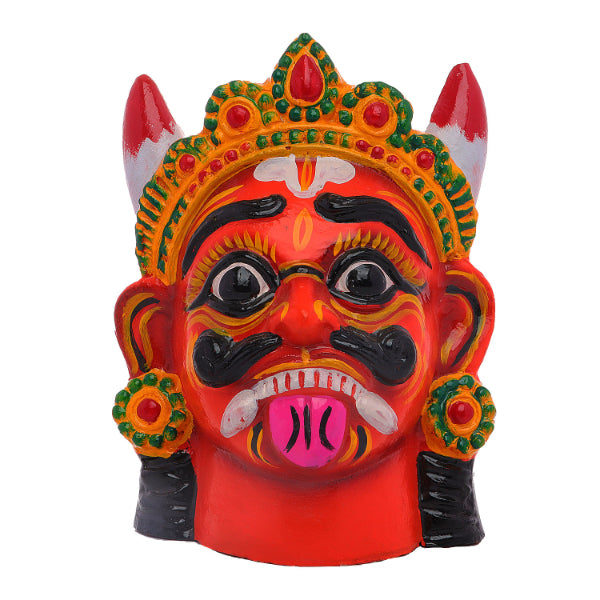
Drishti Thalai - 11 Inch | GiriAus Golu Doll/ Clay/ Evil Eye Doll/ Navratri Bommai/ Gifts/ Showpiece
• The Hindu notion of ""Dristi"" or ""Drishti"" is connected to the idea of the evil eye and the requirement for defense against its harmful effects.
• The word ""dristi"" describes a hostile stare or the casting of an unfavorable or jealous glance at another individual or thing.
• Different rituals and activities are used in different parts of India to fend off the evil eye or protect against its impact. One such custom is the utilization of a ""Dristi head"" or ""Nazar battu.""
• It is a tiny, ornamental item, frequently made of metal or another substance, fashioned like an eye or a circular disc with concentric rings.
• The Dristi head is frequently used in homes, especially in regions where the evil eye concept is widespread.
• To act as a protective screen against the powers of the evil eye, it is hung near entrances, placed on cars, or incorporated into jewelry and accessories.
• The goal is to draw in and absorb any bad energy coming via the gaze, stopping it from hurting people or things.
• Though founded in superstition and cultural customs, the evil eye and the use of Dristi heads are significant to many individuals who adhere to these traditions.
• The Dristi head is worn as a talisman or amulet to ward off ostensibly harmful forces and foster feelings of safety and well-being.It's crucial to remember that the idea of the evil eye and the attendant beliefs are not embraced by everyone or backed by scientific data.
• Different tribes and individuals within Hinduism have different perspectives on the evil eye and how to employ protective items like Dristi caps.
• Plenty of exclusive traditional based products only at GiriAus . Visit our stores and website to embrace our culture and tradition. This is a perfect addition to your home shrine or golu doll display during festive occasions like Navaratri and Dussehra. Dassara dolls are available in various styles on our website. This golu bommai/kolu bommai set makes for a thoughtful gift.
